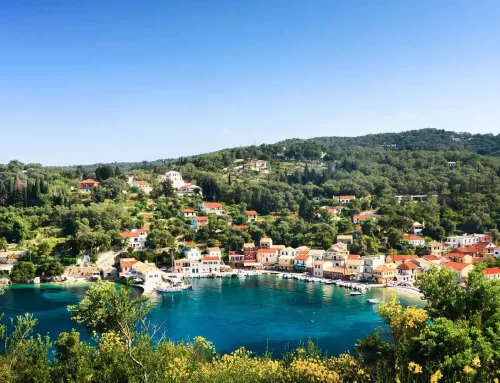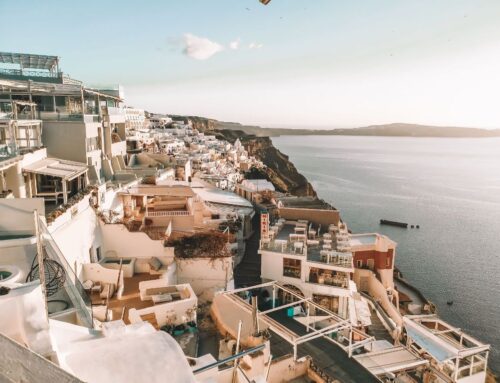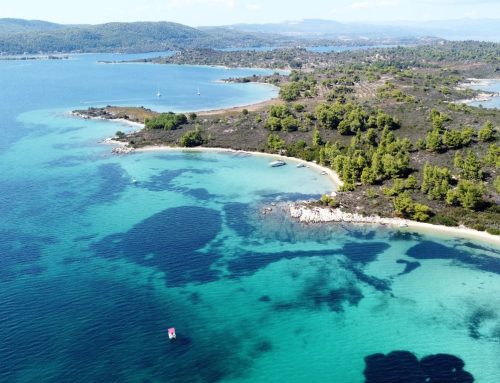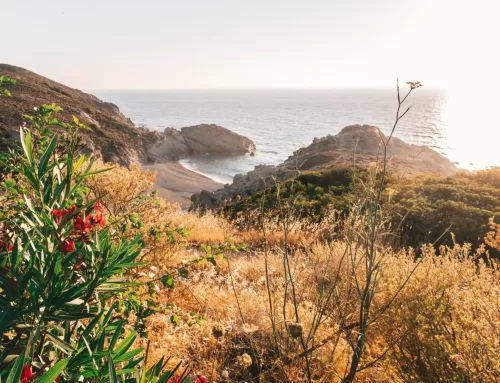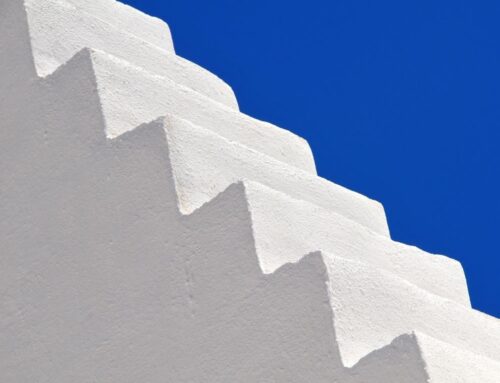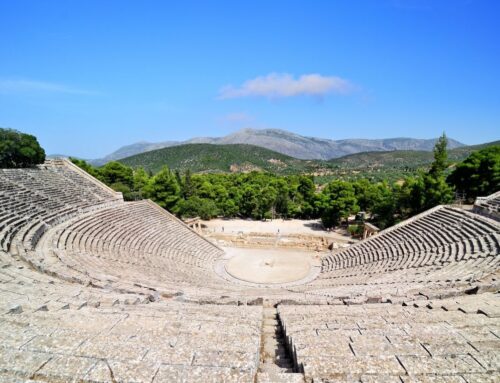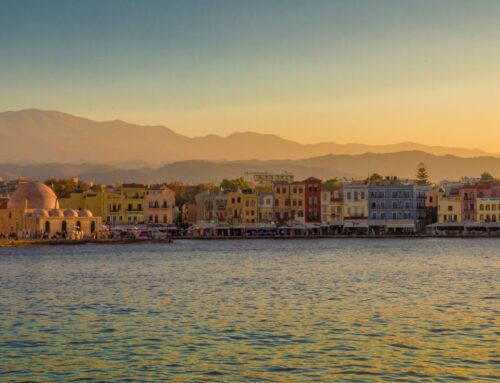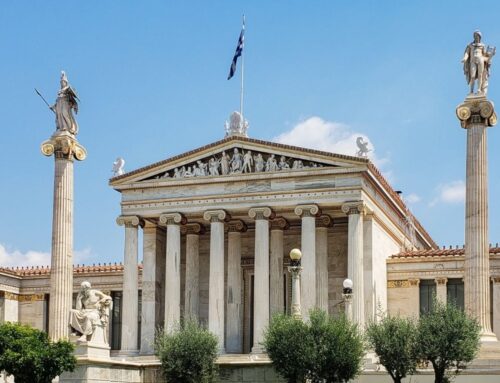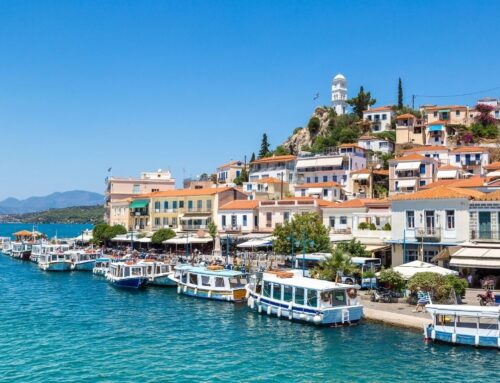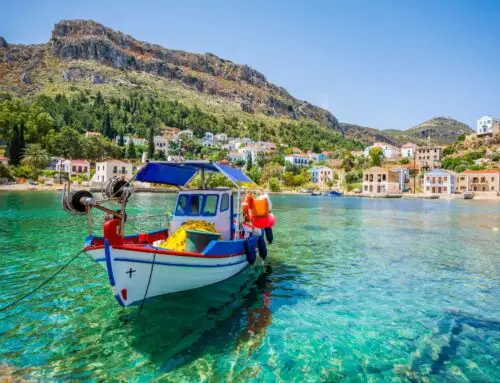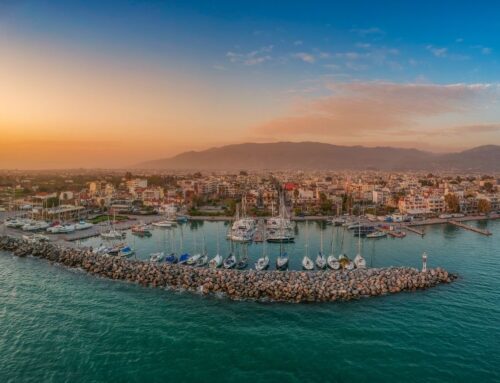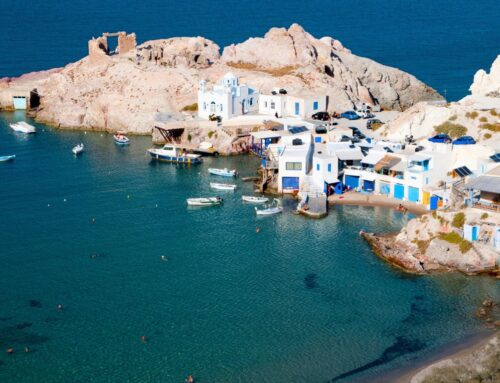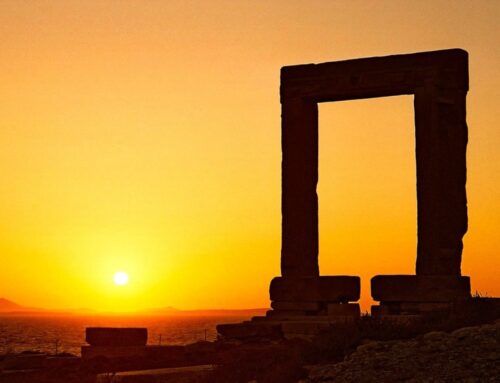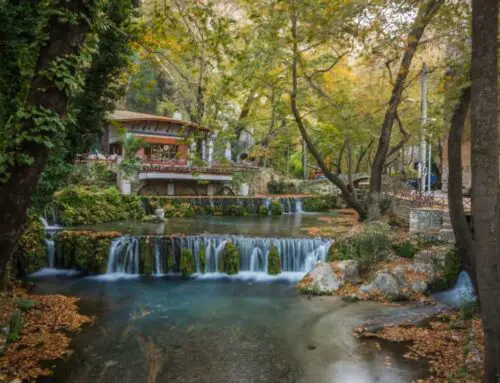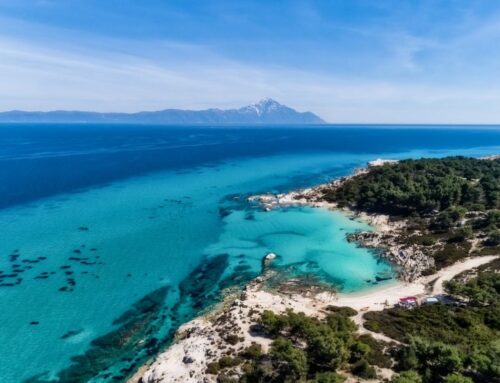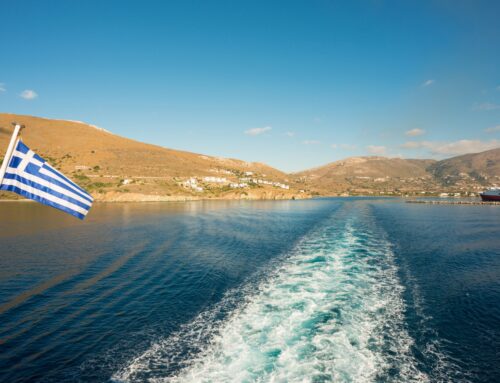The Akrotiri Ruins In Santorini: Know Before You Go
The Akrotiri Ruins In Santorini: Know Before You Go

☞ Table of Contents:
The prehistoric settlement of Akrotiri, in Santorini island, is one of the most important sites in the Aegean.You might have never heard of the Akrotiri ruins in Santorini before, but if you are planning a visit to the island, this is one of the spots that you should try and visit. The prehistoric village of Akrotiri combines history, legend and the tale of a civilization that out of pure luck still survives intact for us to discover and experience.
Even visitors that are not history enthusiasts or inclined to visit archaeological sites will find interest in the story of Akrotiri and the mythical island of the Lost Atlantis that still mystifies historians and archaeologists to this day.
History of Akrotiri Ruins in Santorini
The establishment of the settlement can be traced all the way back to 4,000 BC during the Neolithic period, a revolutionary time when agricultural settlements began to form.
From the 3rd millennium BC, during the period archaeologists refer to as the Cycladic culture, Akrotiri started to rise in importance due to its geographic location and became a wealthy merchant harbour, trading in goods from across mainland Greece and with ties to Crete, as well as Cyprus, Syria and Egypt.
Akrotiri is also characterized as a Minoan Bronze Age settlement, due to its association with the Minoan civilization in Crete.
The connection between the Minoan civilization and the settlement of Akrotiri are evident in the discoveries that have been made. The two have similarities in their clothing, pottery, figurines, frescoes and buildings. However, it is not known when the people of Akrotiri embraced the Minoan way of living exactly. The 2nd millenium BC was a time of great prosperity for the Minoans, who had established trade routes throughout the east Mediterranean and build lavish palaces, like the famous Knossos. It would make sense then, that the people of Akrotiri had adopted the style of the Minoans and profited by establishing trade relations with their neighbors.
As an outpost of the Cretan Minoan civilization, Akrotiri also enjoyed a period of wealth and prosperity. That, however, probably only lasted for about 50 years, according to Greek archaeologist Nanno Marinatou. This was the last period of happy days in Akrotiri.
Nea Kameni in the middle of the submerged caldera of Santorini
Explosion and Destruction
What we do know is that a massive earthquake in the 17th century BC triggered one of the most destructive volcanic explosions of the last 4,000 years. It annihilated the civilization of Akrotiri and set off a tsunami that would permanently scar the Minoan civilization of Crete, ultimately leading to its demise.
What we see today is that same city, frozen in time and perfectly preserved since its destruction.
It is for this reason, that Akrotiri is sometimes referred to as the Greek Pompei or the Pompei of the Aegean.The differences between Pompei and Prehistoric Akrotiri are that no animals or human remains were found.
This has led archaeologists to believe, that the people had enough time to evacuate the city. It might also be one of the reasons why no gold was found on the site.
Santorini had frequent volcanic explosions and the people of Akrotiri would had known to evacuate. However, we don’t know where the people went or why they never returned. It would appear that after the enormous destruction of 17th BC, Akrotiri was abandoned for good.
The cliffs that were formed after the explosion of the volcano
Discovery and Excavations of the Akrotiri Ruins in Santorini
The settlement of Akrotiri remained buried and unknown for thousands of years.
In the 1860s, earth and ash from Santorini started to be mined to be used for the building and insulation of the Suez Canal. There the workers accidentally stumbled across parts of the old stone walls and ancient artifacts of the lost city. It would take another 100 years for Spyridon Marinatos, a Greek archaeologist who had studied the excavations of the palace of Knossos, to begin extensive excavations in Santorini and uncover the hidden treasures beneath.
Having carefully studied the history and excavations from Minoan Crete, Marinatos developed a theory that would explain the presence of pumice in Knossos and the abrupt flooding and eventual destruction of the great civilization. He was the first to link the volcanic explosion of Santorini to the Minoan civilization and to test his theory he continued his research in Santorini.
It only took two days after excavations had began for a two story building to be unearthed, the first of 40 that have been recovered to this day.
Marinatos died on the site of the excavations 7 years later after suffering a stroke. Another version of events states the archaeologist died as a result of a skull fracture during an excavation accident.
A notice of his death can still be found in the digital archives of the New York Times from 1974.
Curious readers will notice how the name of the ancient city is stated as “not yet determined”.
For a fact, we still don’t know how the inhabitants of Akrotiri would have called themselves. The name comes from the modern village of Akrotiri nearby. This is but just one of the mysteries that surround the Akrotiri ruins of Santorini and one of the many reasons why many believe this to be the Lost Atlantis.
The grave of archaeologist Spyridon Marinatos on the site of the prehistoric settlement of Akrotiri.
Life in the prehistoric settlement of Akrotiri
Life in the urban centre of Akrotiri was marked by their connection to the sea and trade.
Akrotiri was primarily a fishing and farming village. The people cultivated grains such as wheat, barley, legumes as well as olives, and wines. They primarily traded in wine, metals and volcanic rock.
The houses, which were usually two or three stories high, were made from stone and mud, with balconies, underfloor heating, hot and cold running water and an elaborate plumbing and drainage system. There were no palaces, like in Minoan Crete, and it is believed they run a democratic and egalitarian society with no social hierarchies.
They did, however, project social status and a higher standard of living with art and decorations. It is incredible that there has been not one house or building discovered that does not include elaborate wall paintings.
The wealth and quality of the murals, in addition to the all the other findings, signify this was an affluent society that was able to endorse and finance artistic talent.
“Any archaeologist who delves into the ruins
of the town has the feeling that he is witnessing the history
of a consumer society.”
Christos Doumas, Professor Emeritus University of Athens, Director of the Akrotiri Archaeological Excavations
Visiting Akrotiri
The archaeological site of Akrotiri is on the south eastern coast of Santorini. It is also only a few kilometers away from Akrotiri village, and one of the most famous beaches of the island, the Red Beach.From Fira, you will need less than half an hour drive, or alternatively you can get a bus that costs a few euros and will drop you off right in front of the archaeological site. The museum is open all year round with reduced hours during the winter period.
Tickets are 12 euros or 6 with a concession. The updated prices can be found here.
The entrance to the archaeological site of Akrotiri.
The site is housed under a beautiful light building.
Only 1/3 of the excavations have been found so far and new discoveries are still made.
Different to other archaeological sites you might have seen, the Akrotiri ruins are covered for protection under a bioclimatic roof. That is because the houses that have been preserved were made from mud and need to be protected from the winds and harsh rays of the sun.
In 2005, the previous roof of the building had collapsed, unfortunately killing with it a British tourist.
The new roof construction took 7 years to complete.
Visitors navigate the site in walkways that are set at roof level, where you can admire the structure of the prehistoric city below.
There are a good amount of signs and information located throughout the site, however, it is best to book a guided tour in order to learn more about the layers of history and culture in Akrotiri.
Don’t forget to take the pathway that leads further down so you can observe the details of the house structures.
Important Artifacts
There are a number of very important artifacts that have been discovered at Akrotiri.
Most of them are now kept at the Museum of Prehistoric Thira and National Archaeological Museum in Athens.
Among the artifacts that were preserved by the thick layer of ash are furniture, vessels that signify the extent of their trade relations, objects used for rituals and beautiful frescoes depicting ship journeys, exotic flora and fauna, and the everyday life of people.
Frescoes of Akrotiri in the Museum of Prehistoric Thera
Frequently Asked Questions about Akrotiri
- When was Akrotiri destroyed?
Akrotiri was destroyed in the destructive explosion of the volcano of Santorini sometime in the 16th century BC.
- What was the connection between the Minoan Kingdom and the ancient settlement of Akrotiri?
Akrotiri operated as an outpost of the Minoan civilization in Crete. Excavations in Akrotiri have unearthed wall paintings and items that are similar in fashion to the Minoans.They two also maintained very close trade relationships. The volcanic explosion that originated in Santorini caused a massive tsunami that damaged and led to the eventual demise of the Minoan civilization.
- Why do people believe that Santorini is the Lost Atlantis?
The prehistoric settlement is named after the modern village, Akrotiri. We are not sure what the original name was. The mythical Atlantis is also mentioned by Greek philosopher Plato in two of his writings. The location or possible existence of Atlantis has always been disputed.
It is also worth visiting the first museum dedicated to the myth of the Atlantis that opened in Santorini in 2019. The interactive museum has multiple digital installations that allow visitors to explore the history and legend of the Lost Atlantis.
- Is Akrotiri in Santorini worth visiting?
Absolutely! It is a hugely important archaeological site and a beautifully preserved site that is worth seeing for yourselves.
Rania grew up in Thessaloniki and spent most of her adult life in her adopted country of New Zealand. When she’s not studying to complete her masters degree she’s either reading, writing or exploring the outdoors.
She loves going on mini adventures, whether it is an impromptu road trip or multi-day hikes. She is interested in photography and languages and strongly believes that feta should be consumed with every meal.
She also thinks Greece is the best holiday destination and invites anyone that thinks otherwise to prove her wrong.
*Disclaimer: This page includes affiliate links. If you decide to book something through one of them, I might get a little bonus, but it won't cost you anything extra.*



